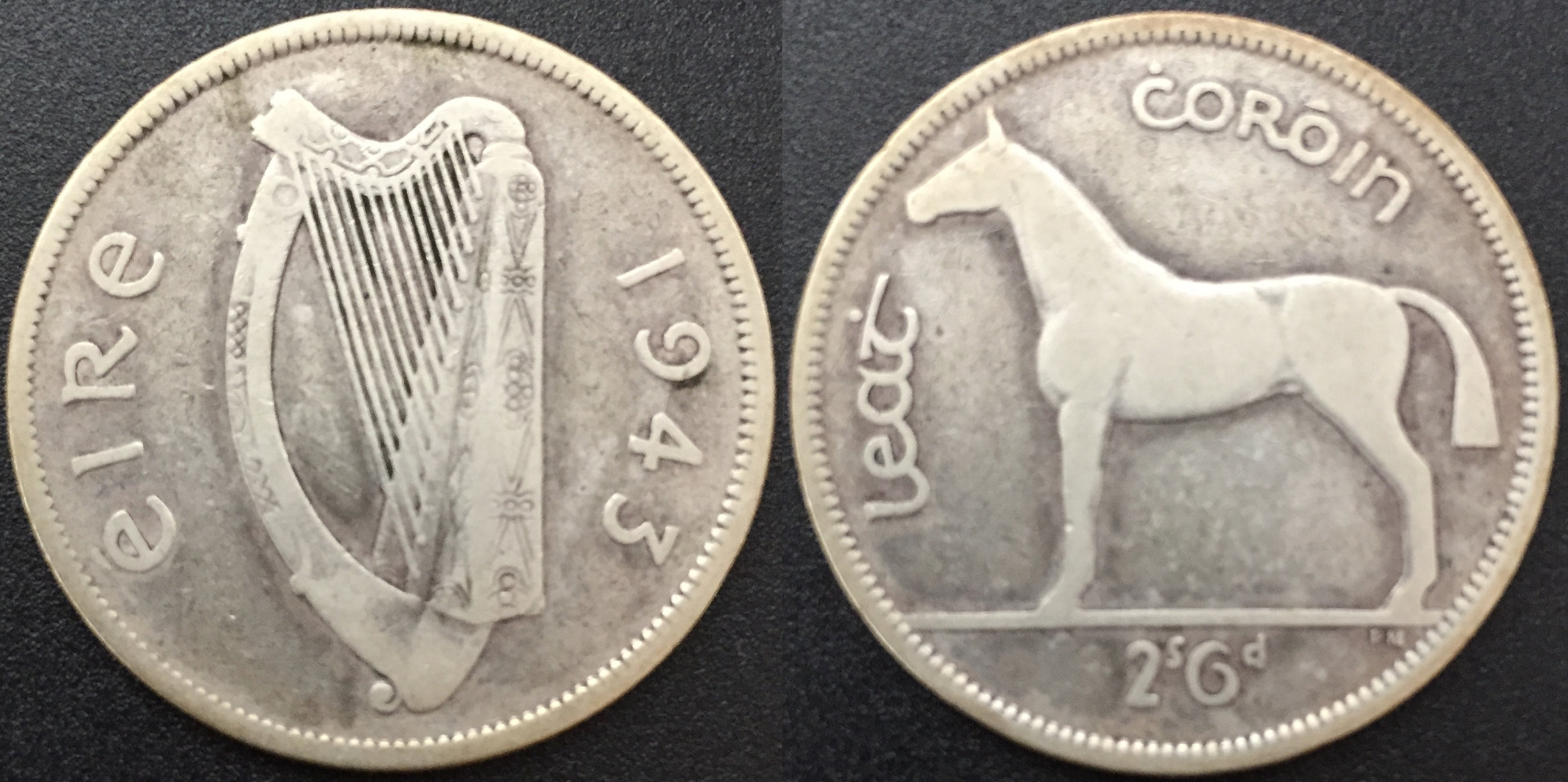Options
Boeing show newp
It's been years since I have had a 1943 Ireland half crown. I traded a group of extra coins to Bruce Wonder for this circulated example. I think it's still estimated at about 500 known - not rare, but scarce enough.
6
Comments
Congrats...
Experience the World through Numismatics...it's more than you can imagine.
Kind of crazy that they saw heavy circulation with a mintage that minuscule.
The 1943 2/6d was struck with a normal mintage of a few hundred thousand but was not issued. In the 1950’s unissued coins were sent to the melting pot. A few 1943 2/6d’s escaped.
Latin American Collection
Coins and paper money of Ireland from the 1940s tended to circulate heavily. There were few collectors. If the coins reached circulation they were used and used and used. The same goes for the paper money.
@291fifth Tell me about it - I also collect 10-shilling notes, which were probably the most heavily used. I have very few crisp notes.
- I also collect 10-shilling notes, which were probably the most heavily used. I have very few crisp notes.
For reference, in the 40's the price of a pint was about one shilling.
Pacific Northwest Numismatic Association
Try finding high grade Irish notes from the 1945-1950 period. I have yet to see a single note from that period that I consider to be uncirculated. The 10/ and 1 Pound notes from that period are seldom seen in high circulated grades. (My grading standards for notes are strict. If it has a barely visible soft center fold it is not uncirculated.)
Nice pick up.
My YouTube Channel
About the best I can do is a nice VF -

Pacific Northwest Numismatic Association
I have found that the notes with the wartime code letters are actually more available than the 1945-50 issues without them. (Though they certainly aren't common.) I suspect that the code letters attracted more interest at an early time so those were what tended to be saved. In the early 2000s there was apparently one date of the one pound note from 1946 that was unknown in any collection. I believe one has since been found but I have no idea what condition it was in.
A problem with many, many of the early Irish notes that appear to be very high grade is pressing. When this is done to the note they often look very good but have lost the embossing that should be evident on a note that hasn't been pressed.
And then there is the issue of count numbers being written on the notes ... another common problem with the early Irish issues.
True uncirculated notes from this early period are just not seen.